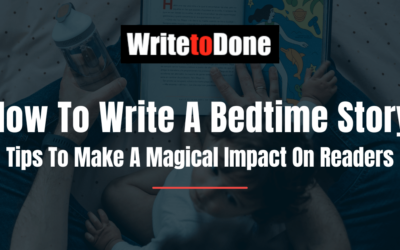Do you want to learn how to find topics to write about?
Do you ever sit down to write a blog post, article or chapter, and nothing, but nothing appears in your mind?
This is the dreaded writer’s block.
The good news is that if you use the following 15 tips, you will generate more ideas than you need, love the writing process, and never ever get stuck.
I find that some Zen meditation techniques enhance my writing.
Most of the problems that arise in the writing process happen when our mind is at war with itself.
At those times our creative energy is scattered, instead of being focused in one steady beam.
As writers, we suffer from a split personality. On one side is the Creator who wants to splash wild ideas all over the page and falls in love with every sentence, and on the other side is the Editor who sits there with pursed lips and ticks off the mistakes.
It’s really important to keep these two apart!
When you’re finding and developing an idea, send the Editor on holiday. When you want to refine what you have written, stuff the Creator into a cage. The first 10 of the following tips will unleash your Creator, the last 5 will give direction to your Editor.
15 Ways to Beat Writer’s Block and Explore Topics to Write About
1. Forge your identity
Say, “I am a writer!”
Maybe you feel reluctant to say it because you think you’re not good enough? Well, forget about ‘good enough’!
A writer writes. Do you write? If yes, then you are a writer.
Plaster your home with notices that say, “I am a writer!” Tell people about it. When you next fill in a form, put “writer” as your profession. Thinking of yourself as a writer will boost your confidence and unlock your creativity.
2. Practice fun writing
If you only write to produce something important, your creativity can become stunted. It’s important to schedule time for fun writing practice.
Maybe you can earmark just 10 minutes a day for fun writing. After all, even a top pianist still practices scales each day! Here is a simple way to practice fun writing: take a blank page and set a timer for 5 minutes.
Write for 5 minutes – without stopping. Don’t think about it. Just do it. The first minute may be difficult, but then your creativity will kick in and surprise you.
3. Find inspiration everywhere
The right place to look for inspiration is – everywhere! Keep your creative mind on the alert at all times. Let’s imagine that you write a blog about blogging. Here is how you could use your everyday experience as inspiration.
You wake up early in the morning: “Why early morning is the best time for writing.” You take a shower: “How to come up with 20 great ideas in the shower.” You have breakfast: “15 reasons why good nutrition can make you a fabulous writer.”
You get into your car: “10 important things driving a car can teach you about writing,” and so on. Not all of your ideas will mature into articles because some may be wacky.
Wacky is good!
Because anything out of the ordinary can trigger your creativity. Check out this great article on how to keep inspiration alive.
4. Use an “everything book“
Ideas are elusive. Get a distracting phone call and you may forget the brainwave that struck you just before. I use an ‘everything book’ to retain and collect ideas. It’s a notebook which I always carry with me. In it, quotes, ideas, and cooking recipes are all jumbled together.
Not only does an “everything book” help you grab that great idea before it disappears, it can be a source of inspiration when you read past entries.
Get a distracting phone-call and you may forget the brainwave that struck you just before. I use an “everything book” to retain and collect ideas.
It’s a notebook which I always carry with me. In it, quotes, ideas, and cooking recipes are all jumbled together. Not only does an “everything book” help you grab that great idea before it disappears, it can be a source of inspiration when you read past entries.
5. Develop a swipe file
Another good idea is to keep a swipe file. This is a folder in which you collect interesting copy that you find. It can be a fine source of inspiration.
6. Prepare your mind by meditating
The best ideas come out of silence. Try starting your writing time with 5 minutes of meditation. Just sit upright in silence.
Notice your breath and the sensations of your body. Listen to sounds around you. Let thoughts go. Even such a short time of meditation can turbo-charge your creativity and make you feel alive.
7. Brainstorm a title
Brainstorming a title before you start to write a piece can kick-start and channel your creativity. Write down a whole list of ideas without discarding a single one.
After all, ideas breed ideas.
When you have a rich collection, select one good-enough title to start with. You can refine it later on. You can find inspiration for titles by reading some of the excellent articles on how to craft titles listed here.
8. Outline the piece
Once you have the working title, lay out the bones of your piece. For example, if your title says something like “20 Tips on How to Write Better Posts,” write down numbers 1 to 20 under each other.
This jolts your creativity into action. Your brain now knows that you expect it to come up with 20 subheadings. Set the total length of your piece and divide it by the number of planned sections.
If you plan to write a 1,000-word piece divided into 20 tips, then you know that each tip should be 50 words long. As you write the piece, check the word count of each segment. As soon as you hit the required length, move on to the next one. This is more efficient than writing a lot more than you need and then having to prune your piece drastically.
9. Leave end and beginning to the last
We can get stuck if we start at the beginning. The beginning is supposed to introduce the theme. But at the start of a writing project we may not know exactly what we’re going to say.
So it’s best to write the introduction later on. Once you have completed your first draft, it’s time to add an introduction and a conclusion. The intro can be short but it needs to say why your theme is important or to outline the benefits that follow from reading your piece. The conclusion should tie it all together.
10. Invite your inner Editor to have a look
Wait until you have finished your draft, then let your Editor have a look at your work. Remember that the first draft doesn’t have to be good. All you need is a certain amount of words on the page with a focus on a particular theme. Now the Editor is going to shape and buff your piece.
11. Check: Does your piece deliver on the title?
The first task of the Editor is to check whether the piece actually delivers what the title promises. If not, you need to either tweak the piece or change the title to fit.
12. Check balance and length
Check whether the segments are reasonably even in length. If they are too long, you can split them into two. If they are too short, you can meld them into one.
Look at the overall word count. Is your piece too long? In that case you need to do a hard prune. If your piece is too short, you need to add more material.
13. Edit each sentence
Read your piece out loud, sentence by sentence. Our ear is much more reliable than our eye in this instance. Weigh up each word. Can you cut it? Can you say it better? Rewriting is the crux of good writing. Sometimes it helps to defer this important task to another time. A break allows us to gain necessary distance from our piece.
14. Check grammar and spelling
A good way to check grammar and spelling is to read a piece back to front. Otherwise our eye tends to skip over mistakes without alerting us. You can use a free account at Grammarly to help you with your spelling.
15. Read your piece out loud
Now your piece is nearly finished. To make sure it is the best it can be, complete two last tasks: print out the piece and then read it out loud. Make sure you have a pen handy. You will notice things you wish to change and can make notes.
Zen Power Writing means writing with a calm and unified mind. Most writing problems are based on brawls between the Creator and the Editor. When you keep these two aspects of writing separate, it will boost your creativity and bring ease to your writing.
















